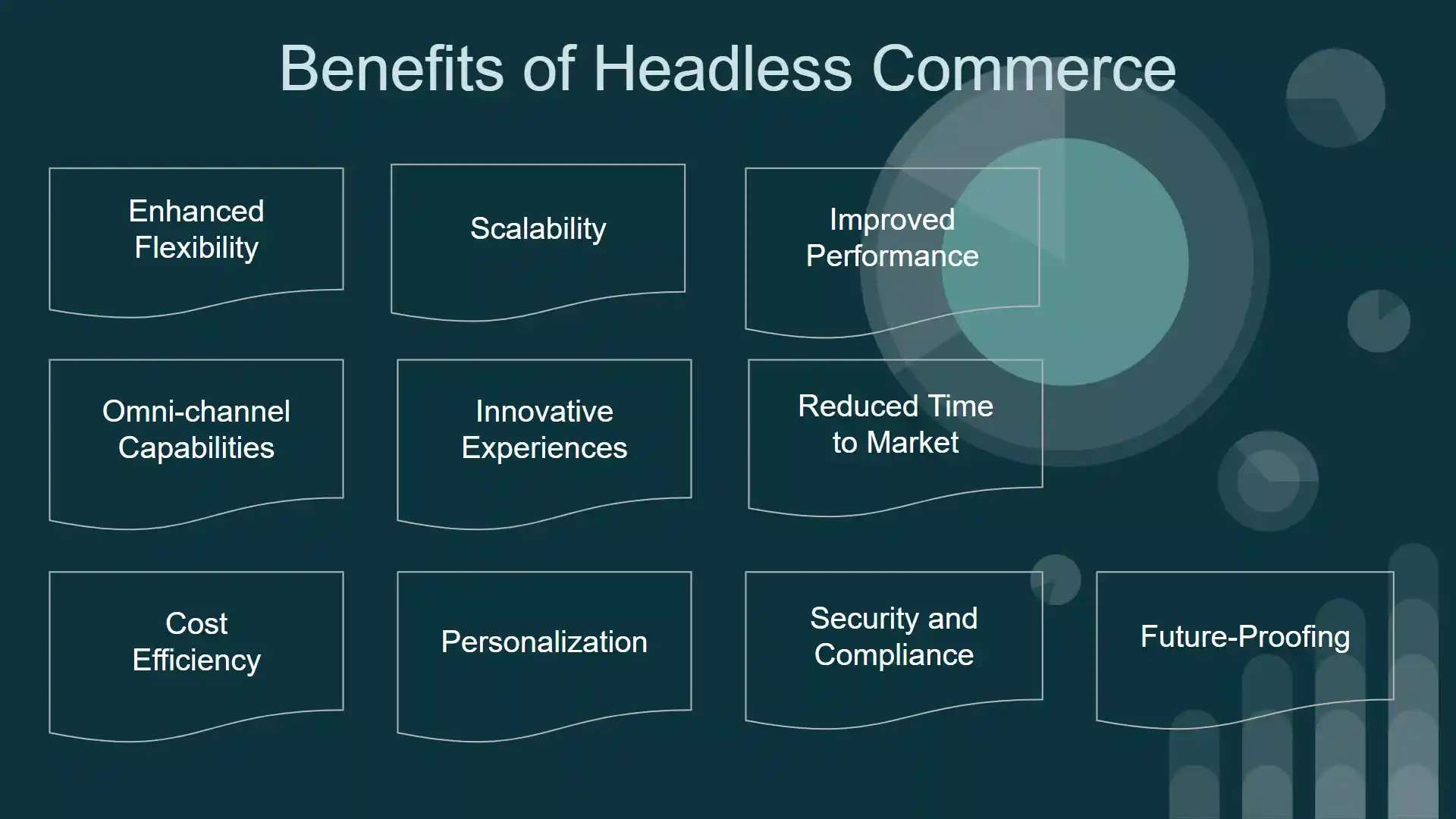Table of Contents
Amid the ever-evolving terrain of e-commerce, businesses are ceaselessly pursuing innovative avenues to enrich user experiences, streamline operations, and outpace competitors. Enter headless commerce, a revolutionary methodology that severs the ties between a website’s front-end presentation and back-end functionality. This paradigm shift signifies a departure from conventional approaches, heralding a new era of digital retail.
Within this comprehensive guide, we embark on an in-depth exploration of headless commerce, uncovering its multifaceted advantages, strategic implementation techniques, and transformative influence on the retail sector.
From heightened flexibility to seamless integration of cutting-edge technologies, headless commerce promises to redefine how businesses interact with their clientele and manage their online presence. Embracing this innovative approach equips retailers with the agility needed to swiftly adapt to changing market dynamics and deliver unparalleled shopping experiences across a spectrum of channels and devices.
Understanding Headless Commerce
Headless commerce revolutionizes the e-commerce landscape by breaking away from the constraints of traditional platforms. Unlike monolithic architectures, it divides the front-end presentation layer from the back-end commerce functionality. This separation allows retailers to adapt swiftly to changing market dynamics, offering unparalleled flexibility and scalability. By decoupling these layers, businesses can optimize each component independently, enhancing performance and user experience.
With headless commerce, retailers can seamlessly integrate new technologies and design trends, catering to diverse consumer preferences across various channels and devices. This innovative approach empowers brands to stay ahead of the competition, delivering frictionless shopping experiences that resonate with modern consumers. In essence, headless commerce represents a fundamental shift in how online stores are built and managed, unlocking endless possibilities for retailers to thrive in today’s dynamic digital landscape.

Benefits of Headless Commerce
1. Enhanced Flexibility
Headless commerce liberates retailers from the constraints of traditional monolithic platforms, allowing them to customize and optimize the front-end and back-end independently. This flexibility enables businesses to adapt quickly to changing market trends, experiment with new features, and deliver personalized experiences tailored to their target audience.
2. Scalability
Traditional e-commerce platforms often struggle to accommodate rapid growth and spikes in traffic, leading to performance bottlenecks and downtime. With headless commerce, retailers can scale their infrastructure horizontally and vertically, ensuring seamless operations even during peak demand periods. This scalability empowers businesses to expand into new markets, launch promotional campaigns, and handle increased transaction volumes without compromising on performance or reliability.
3. Improved Performance
By decoupling the front-end presentation layer from the back-end commerce functionality, headless commerce enables retailers to optimize each component for maximum performance. Lightweight front-end frameworks, coupled with cloud-based back-end infrastructure, ensure lightning-fast load times, smooth navigation, and responsive user interfaces, thereby enhancing the overall shopping experience.
4. Omni-channel Capabilities
Headless commerce empowers retailers to embrace an omnichannel approach, seamlessly integrating their online store with various touchpoints such as websites, mobile apps, social media platforms, point of sale, and IoT devices. This enables businesses to deliver consistent branding, personalized content, and frictionless transactions across multiple channels, fostering deeper engagement and loyalty among consumers.
5. Innovative Experiences
With headless commerce, retailers have the freedom to experiment with cutting-edge technologies such as augmented reality (AR), virtual reality (VR), voice commerce, and machine learning. By integrating these immersive experiences into their online stores, businesses can captivate audiences, differentiate themselves from competitors, and drive conversions through interactive product demonstrations, personalized recommendations, and engaging content.

6. Reduced Time to Market
Headless commerce accelerates the development and deployment of new features and updates, thanks to its modular architecture and API-driven approach. This agility allows retailers to iterate quickly, respond to market demands in real-time, and stay ahead of competitors by introducing innovative functionalities and optimizations without disrupting the overall ecosystem.
7. Cost Efficiency
Traditional e-commerce platforms often require significant investment in infrastructure, customization, and maintenance. In contrast, headless commerce offers cost efficiencies by eliminating the need for complex integrations, reducing development time, and leveraging cloud-based services for scalability and reliability. This enables businesses to allocate resources more effectively, invest in strategic initiatives, and achieve a higher return on investment (ROI) in the long run.
8. Personalization
Headless commerce empowers retailers to deliver highly personalized shopping experiences tailored to individual preferences, browsing history, and purchase behavior. By leveraging customer data and AI-driven algorithms, businesses can serve relevant product recommendations, promotions, and content in real-time, increasing engagement, loyalty, and conversion rates.
9. Security and Compliance
With cyber threats on the rise, security, and compliance are paramount concerns for online retailers. Headless commerce mitigates these risks by implementing robust security measures, such as encryption, authentication, and access controls, at both the front-end and back-end layers. Additionally, by leveraging cloud-based infrastructure, retailers can benefit from built-in security features and regular updates to protect against evolving threats and ensure compliance with industry regulations.
10. Future-Proofing
In a rapidly evolving digital landscape, future-proofing your e-commerce infrastructure is essential for long-term success. Headless commerce provides retailers with the flexibility, scalability, and agility to adapt to emerging technologies, consumer trends, and market dynamics. By embracing this innovative approach, businesses can future-proof their online stores, stay ahead of the curve, and continue to deliver exceptional shopping experiences that delight customers and drive sustainable growth.
Final Reflections on Headless Commerce

Headless commerce signifies a revolutionary change in the retail sector’s online approach, presenting a plethora of advantages that enable businesses to excel in the digital era. With heightened flexibility and scalability, coupled with enhanced performance and personalized experiences, the benefits of headless commerce are unmistakable. Embracing this pioneering method opens doors to new avenues of growth, setting retailers apart and fostering success in the fiercely competitive e-commerce domain.
This shift empowers brands to adapt swiftly to market demands, integrate cutting-edge technologies seamlessly, and cater to evolving consumer preferences across various channels.
As businesses navigate the dynamic digital landscape, headless commerce emerges as a strategic ally, propelling them toward innovation, expansion, and lasting relevance. It’s not merely a trend but a fundamental evolution in how online retail operates, offering limitless potential for those ready to embrace change and seize opportunities.